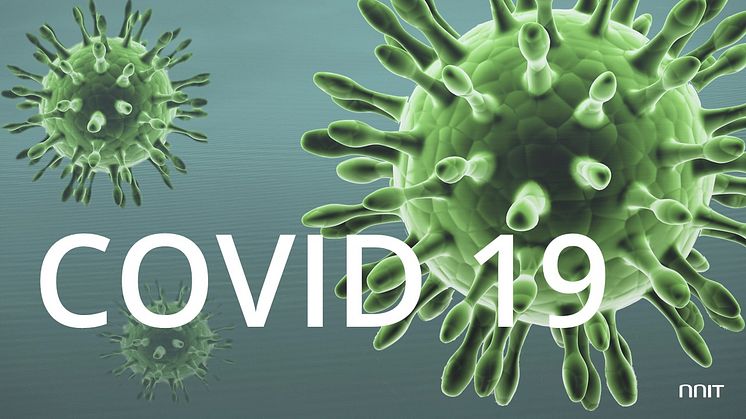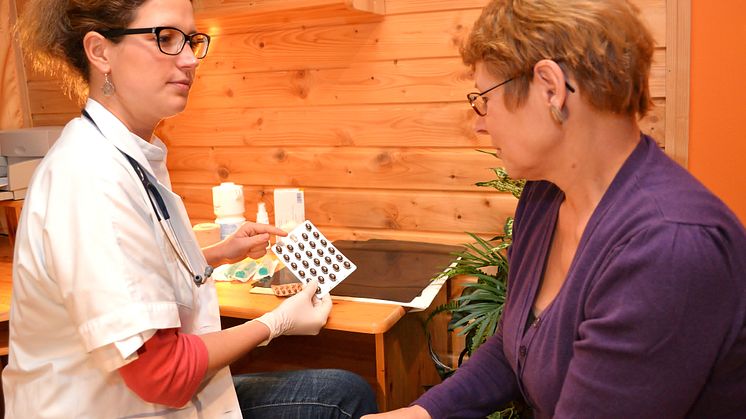
News -
The importance of ensuring drug safety
We asked Jesper Borgstrøm, Advanced Advisory Consultant, NNIT Life Sciences – Regulatory Affairs, to take us through the safety aspects of one of the world’s most regulated product development and manufacturing processes.
Jesper Borgstrøm holds an MSc in pharmaceutical sciences and is an expert in drug safety and pharmacovigilance. In his role at NNIT, he advises pharmaceutical companies on how to best support and optimize their pharmacovigilance processes with the use of IT. Mostly, this relates to database management, ensuring data integrity, data processing and migration, but also to workflows and documentation. All of these areas need to comply with the heavy regulation imposed by governments and authorities.

“Ensuring drug safety is incredibly complex and goes way beyond drug approval. It’s an ongoing audit process and transcends all phases of drug discovery, development, manufacturing and marketing,” Jesper Borgstrøm emphasizes as his first point:
“Even after a drug is approved and released into the market, a controlled, ongoing feedback process is carried out to ensure that adverse effects and events are logged and analyzed in accordance with a strict and regulated process.”
Despite these hardcore rules and regulations, Jesper further emphasizes that taking any drug comes with an inherent risk:
“No drug is 100% safe to take, all medicines have side effects, and these vary depending on who is taking them, how they are taking them and in what context. The decision to release a drug ultimately relies on a well-documented risk-benefit analysis – even so, it’s not always easy to determine whether the pros outweigh the cons. In any case, patients should be able to rely on a certain level of safety, and that’s precisely why the pharmaceutical industry is so regulated, and pharmacovigilance is such a big deal.”
The importance of continued pharmacovigilance
To get any drug or vaccine to market, pharmaceutical companies must carry out rigid processes, which usually take 9-16 years. Throughout these, drug safety and pharmacovigilance are important aspects that must be carried out in compliance with local and regional regulation.
 The phases of the drug development process. Drug safety must be ensured in accordance with regulations; and continued pharmacovigilance must be performed to monitor any adverse drug reactions – particularly once the drug is released into the market.
The phases of the drug development process. Drug safety must be ensured in accordance with regulations; and continued pharmacovigilance must be performed to monitor any adverse drug reactions – particularly once the drug is released into the market.
Patient safety is a prerequisite for getting a drug approved, but it is also likely to speed up the review and approval phase, if the pharmaceutical company can demonstrate a very high level of efficiency, which is important for two reasons: pharmaceutical companies generally have a mission relating to helping people, but they are also a business, and the quicker they can get their drug to market, the more return on investment for them – over the 20 years their patent is valid.
Drug safety and efficiency are the deciding factors in getting a drug approved (or not). Considering that less than 10% of the drug candidates are approved by the Food and Drug Administration in the USA; drug safety data and compliance are very important factors.
Nevertheless, as Jesper Borgstrøm points out:
“The real safety test of any drug is when it hits the market and is ‘tested’ among a much larger and more diverse group of patients, and that is why continued pharmacovigilance is so important. The feedback from patients of a certain age group, not part of the clinical trials, may start to report adverse effects not previously found. And these findings are then logged, analyzed and assessed for significance, and ultimately find their way into the package insert to guide doctors and patients in safe prescription and use – or are severe enough to get the drug retracted from the market,” Jesper Borgstrøm explains and elaborates:
“It’s how we ensure that a drug is safe to take for the majority of patients, across a broad variety of segments and over time.”
Is it safe to speed up the drug development process?
Right now, a number of pharmaceutical companies and laboratories are “competing” to develop a vaccine for COVID-19 within a desired timeframe of 1-2 years. But if the drug development process typically takes 12 years, how is it possible to produce a safe vaccine in 1-2 years’ time, we asked Jesper Borgstrøm?
Jesper Borgstrøm confirms that 1-2 years is indeed very fast and would be a first:
“In most markets, compromising the safety aspects is not an option, so provided you are able to progress from the research and development phase and speed up the review and approval phase via fast-tracking, which is likely given the acute attention, your best bet is to optimize the whole process by implementing smart tools to support each phase. Correct data processing and quality management are essential and huge parts of the drug development process and are both incredibly time-consuming and overwhelming if you don’t have the right supporting tools.”
The quicker and easier you can ensure compliance with pharma regulation, the quicker you can get your product to market, Jesper Borgstrøm states and continues:
“Pharmacovigilance as a discipline is growing with more and more demands being made. In addition to adverse drug reactions, you now also have to monitor no effect or declining effect [events]. When processing personal patient data, you have to ensure compliance with data privacy regulations, and of course you have to ensure correct data logging and categorization at all times. It’s really a very complex, manual and expensive process, which lends itself very well to digitalization as well as automation technologies such as robotics and artificial intelligence. These can be implemented across all phases and disciplines to aid and fast-track the process.”
This of course is precisely NNIT’s specialty, and Jesper confirms an increased interest in his area of expertise, precisely because it can make a huge difference to how quickly pharmaceutical companies are able to get their products to market – in full compliance with local and regional regulation.
“The point of drug safety and pharmacovigilance is to ensure that any given drug does more good than harm. And it’s so much easier to get a good result when you’re only testing it on a small scale. The difficult part comes after, when it’s released to market and you start getting reports from patients on a grand scale. At this stage, pharmacovigilance plays such a big role in ensuring continued drug safety,” Jesper Borgstrøm finishes.
***
About drug safety and pharmacovigilance
The terms Drug Safety and Pharmacovigilance are broadly and interchangeably used to describe the processes and methods of ensuring drug safety by gathering and reporting adverse drug reactions.
So, what is the difference? Put simply, drug safety (DS) is reactive while pharmacovigilance (PV) is proactive: DS is about reporting and compliance, whereas PV focuses on interpreting signals in the more strategic context of marketing.
DS comes into play mostly before a drug is introduced into the market to ensure that the drug is safe to prescribe and use (doing more good than harm).
Pharmacovigilance involves proactively identifying signals and trends with an increased focus on the post-marketing environment:
How is the drug performing in the real world among much larger and more diverse patient groups?
The insight gained is then used to design additional trials, to provide better information for patients and doctors and for improved market positioning for new medicines.


